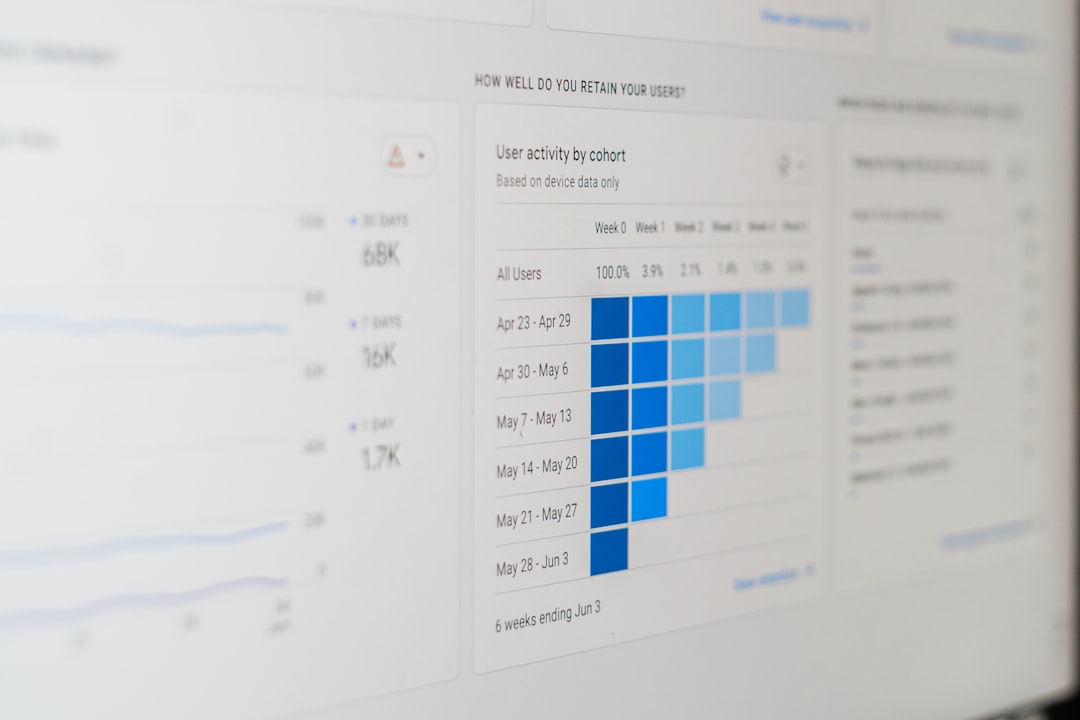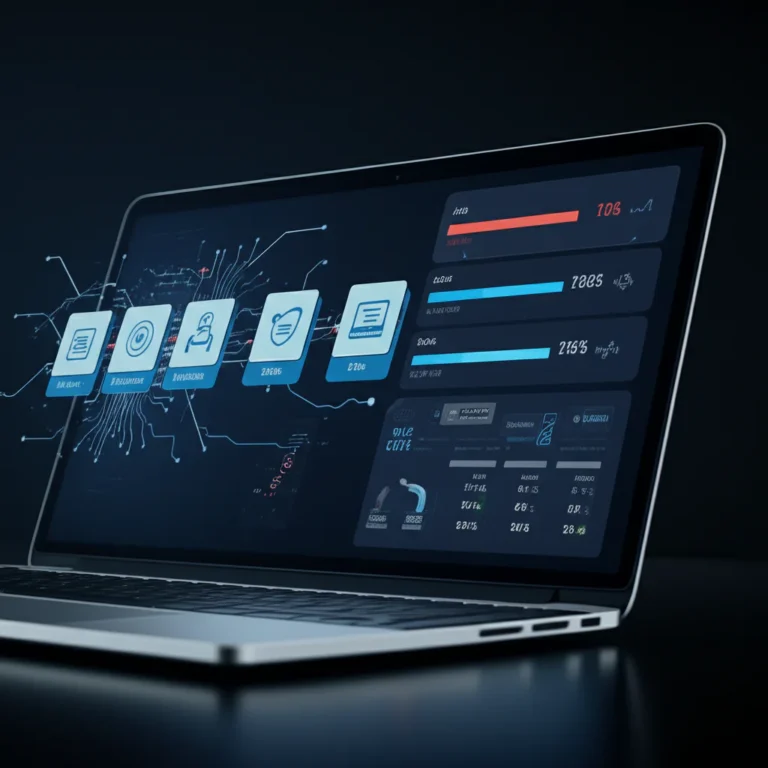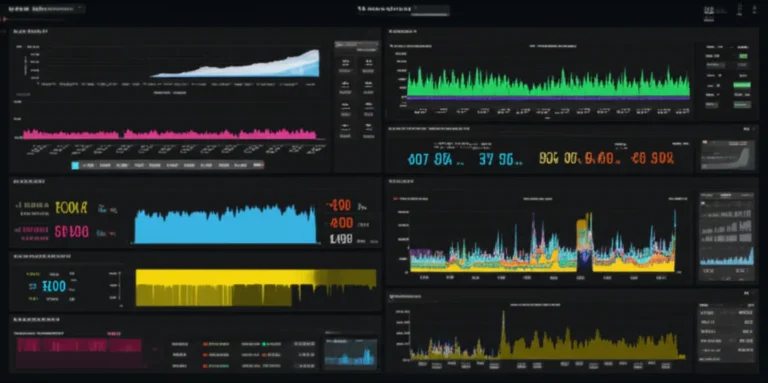Support our educational content for free when you purchase through links on our site. Learn more
What Are the 7 Key Differences Between Evaluating AI Models on Training vs. Test Data? 🤖 (2025)

Ever wondered why your AI model shines brilliantly during training but stumbles when faced with new data? You’re not alone! Many AI practitioners fall into the trap of trusting training data performance alone, only to be blindsided by poor real-world results. At ChatBench.org™, we’ve seen firsthand how understanding the nuanced differences between evaluating on training versus test data can transform your AI projects from flops to phenomenal successes.
In this article, we unravel the 7 critical differences that separate training data evaluation from test data evaluation. We’ll explore why relying solely on training data is like studying only the answers to a practice test, why test data is the ultimate reality check, and how validation data plays the unsung hero role in between. Plus, we’ll share expert tips, real-world examples, and the best tools to ensure your AI models don’t just memorize but truly learn and generalize.
Ready to unlock the secret to trustworthy AI model performance? Let’s dive in!
Key Takeaways
- Training data evaluation measures how well your model learned the known data but can mask overfitting.
- Test data evaluation reveals your model’s ability to generalize to unseen, real-world data — the true measure of success.
- Validation data helps tune models without contaminating the final test, preventing overfitting.
- Choosing the right metrics (accuracy, precision, recall, F1, AUC-ROC) depends on your specific AI task and data balance.
- Beware of pitfalls like data leakage, small test sets, and ignoring class imbalance that can skew evaluation results.
- Leverage powerful tools like Scikit-learn, TensorBoard, and MLflow to track and visualize model performance effectively.
- Continuous monitoring post-deployment is essential to catch data drift and maintain AI reliability over time.
👉 Shop AI Platforms & Tools:
- Amazon SageMaker: Amazon | AWS Official
- Azure Machine Learning: Microsoft Azure
- Oracle Cloud Infrastructure AI: Oracle AI Services
- Scikit-learn Books & Resources: Amazon | Official Site
Table of Contents
- ⚡️ Quick Tips and Facts
- 🔍 Understanding AI Model Evaluation: Training Data vs. Test Data
- 📚 The Evolution of AI Model Performance Metrics
- 🤖 What Is AI Model Training? A Deep Dive Into the Basics
- 🛠️ The Process of Training an AI Model: From Data to Deployment
- 📊 Key Differences Between Training Data and Test Data in AI
- 1️⃣ Why Evaluating on Training Data Alone Can Be Misleading
- 2️⃣ The Critical Role of Test Data in Measuring Generalization
- 3️⃣ Overfitting vs. Underfitting: How Evaluation Data Reveals Model Health
- 4️⃣ Validation Data: The Unsung Hero Between Training and Testing
- 🧠 Role of Data Quality and Quantity in Model Evaluation
- 📈 Common AI Performance Metrics: Accuracy, Precision, Recall, and More
- ⚖️ Balancing Bias and Variance: Insights From Training and Test Evaluations
- 🧩 Real-World Examples: How Companies Evaluate AI Models Effectively
- 🛡️ Pitfalls to Avoid When Evaluating AI Models on Training vs. Test Data
- 🔧 Tools and Frameworks for AI Model Evaluation
- 🚀 Future Trends in AI Model Evaluation Techniques
- 💡 Quick Tips for Robust AI Model Performance Evaluation
- 🎯 Conclusion: Mastering AI Model Evaluation for Better Outcomes
- 🔗 Recommended Links for Further Reading
- ❓ AI Model Evaluation FAQs
- 📚 Reference Links
⚡️ Quick Tips and Facts
Before we dive into the nitty-gritty of evaluating AI model performance on training versus test data, here are some quick nuggets to keep in mind:
- Training data is what your AI model learns from — it’s like the classroom where the model studies patterns and relationships.
- Test data is the final exam — unseen data used to check if the model can generalize beyond what it learned.
- Evaluating only on training data? ❌ You risk overfitting — your model memorizes the training set but flunks real-world data.
- Evaluating on test data gives a realistic estimate of model performance in production. ✅
- Validation data is the middle ground — used to tune hyperparameters and avoid overfitting before the final test.
- Common metrics to evaluate models include accuracy, precision, recall, F1 score, AUC-ROC for classification, and MAE, MSE, RMSE for regression.
- Cross-validation techniques (like k-fold) help maximize data usage and provide robust performance estimates.
- Data quality and quantity are king — no amount of fancy algorithms can fix bad data.
- Beware of data leakage — test data must be strictly unseen during training to avoid inflated performance.
- Oracle Cloud Infrastructure (OCI) and other platforms offer powerful tools to accelerate training and evaluation at scale.
Want to master AI model evaluation? Stick with us — we’ll unpack every angle with real-world insights from the ChatBench.org™ AI research team. 🚀
🔍 Understanding AI Model Evaluation: Training Data vs. Test Data
When you hear “evaluating AI model performance,” what comes to mind? Is it just about how well the model does on the data it was trained on? Not quite. At ChatBench.org™, we often say: “Training data is the rehearsal, test data is opening night.”
- Training data is the dataset fed into the model during the learning phase. The model adjusts its internal parameters (think weights in neural nets) to minimize errors on this data.
- Test data is a separate, unseen dataset that simulates real-world inputs. It’s the ultimate judge of whether your model learned generalizable patterns or just memorized the training examples.
Evaluating on training data alone is like grading a student on their homework — it tells you if they can replicate what they’ve seen. But test data evaluation is like giving them a surprise quiz — it reveals if they truly understand the material.
Why does this matter? Because a model that performs perfectly on training data but poorly on test data is said to be overfitting — it’s learned noise and quirks, not the underlying signal. Conversely, if your model performs poorly on both, it might be underfitting — too simple to capture the patterns.
For a deep dive into key benchmarks for evaluating AI model performance, check out our related article What are the key benchmarks for evaluating AI model performance?.
📚 The Evolution of AI Model Performance Metrics
AI model evaluation has come a long way since the early days of simple accuracy scores. Today, we use a rich toolbox of metrics tailored to the problem type and data characteristics:
| Metric | Type | Use Case | Strengths | Limitations |
|---|---|---|---|---|
| Accuracy | Classification | Balanced classes | Easy to interpret | Misleading on imbalanced data |
| Precision | Classification | When false positives are costly | Focuses on positive prediction | Ignores false negatives |
| Recall | Classification | When missing positives is costly | Measures completeness | Can increase false positives |
| F1 Score | Classification | Balanced precision & recall | Harmonic mean balances trade-offs | Can be less intuitive |
| AUC-ROC | Classification | Model discrimination ability | Threshold-independent | Less interpretable for some users |
| MAE | Regression | Average absolute error | Intuitive units | Sensitive to outliers |
| MSE | Regression | Penalizes large errors | Differentiable for optimization | Squared units harder to interpret |
| RMSE | Regression | Root of MSE | Same units as target | Still sensitive to outliers |
| MAPE | Regression | Percentage error | Scale-independent | Undefined if actual=0 |
These metrics help us understand not just how well a model performs, but where it might fail — crucial when evaluating on training vs. test data.
🤖 What Is AI Model Training? A Deep Dive Into the Basics
At its core, AI model training is the process of teaching a model to recognize patterns in data by adjusting its internal parameters. Think of it as sculpting a block of marble — you chip away errors until the shape fits the data well.
- The model starts with random parameters.
- It processes training data, makes predictions, and calculates errors (loss).
- Using optimization algorithms like Gradient Descent, it tweaks parameters to reduce loss.
- This cycle repeats over many epochs until the model converges or stops improving.
The goal? To create a model that not only fits the training data but also generalizes well to new, unseen data — a tricky balance!
Oracle’s AI model training guide highlights this iterative nature: “The process is the foundation of learning—the ability to recognize patterns, understand context, and make appropriate decisions.” Oracle AI Model Training
🛠️ The Process of Training an AI Model: From Data to Deployment
Training an AI model isn’t just feeding data into an algorithm. It’s a multi-step journey:
- Data Preparation: Curate, clean, and transform raw data into a usable format. Quality here is non-negotiable.
- Model Selection: Choose an algorithm suited to your problem — from linear regression to deep neural networks.
- Initial Training: Run the model on training data, adjusting parameters to minimize errors.
- Validation: Use a separate dataset to tune hyperparameters and prevent overfitting.
- Testing: Evaluate final model performance on unseen test data to estimate real-world accuracy.
- Deployment: Integrate the model into production systems.
- Monitoring & Maintenance: Continuously track model performance and retrain as needed to handle data drift or new patterns.
Each step is critical. Skipping validation or testing? You’re playing with fire.
📊 Key Differences Between Training Data and Test Data in AI
| Aspect | Training Data | Test Data |
|---|---|---|
| Purpose | Model learns patterns | Model’s generalization is evaluated |
| Exposure | Used during model parameter updates | Completely unseen during training |
| Size | Usually largest subset | Smaller subset |
| Risk of Overfitting | High if model memorizes data | Low if kept separate |
| Role in Evaluation | Measures learning progress | Measures real-world performance |
| Feedback Loop | Used to update model parameters | No feedback; final performance check |
Understanding these differences is key to interpreting evaluation results correctly.
1️⃣ Why Evaluating on Training Data Alone Can Be Misleading
Imagine you’re a student who memorizes the textbook answers but doesn’t understand the concepts. You ace the homework but bomb the exam. That’s exactly what happens when you evaluate an AI model only on training data.
- The model can overfit, capturing noise and idiosyncrasies specific to the training set.
- Training accuracy might be near-perfect, but the model fails to predict new data accurately.
- This gives a false sense of confidence and poor real-world performance.
Our engineers at ChatBench.org™ have seen models with 99% training accuracy but only 75% on test data — a classic red flag.
2️⃣ The Critical Role of Test Data in Measuring Generalization
Test data is the gold standard for evaluating if your model can handle new, unseen inputs — the true test of AI usefulness.
- It simulates real-world scenarios your model will face after deployment.
- Helps detect overfitting and underfitting.
- Provides unbiased performance metrics to compare different models or training strategies.
Without test data, you’re flying blind. As Oracle puts it, test data is “taking the training wheels off” — the moment of truth.
3️⃣ Overfitting vs. Underfitting: How Evaluation Data Reveals Model Health
Evaluating on both training and test data helps diagnose model issues:
| Model Issue | Training Performance | Test Performance | Cause | Solution |
|---|---|---|---|---|
| Overfitting | High | Low | Model too complex, memorizes data | Simplify model, regularize, get more data |
| Underfitting | Low | Low | Model too simple, can’t capture patterns | Increase model complexity, feature engineering |
| Good Fit | High | High | Balanced complexity and data | Maintain and monitor |
This diagnostic power is why evaluating on both datasets is essential.
4️⃣ Validation Data: The Unsung Hero Between Training and Testing
Validation data is the middle child of datasets, often overlooked but vital:
- Used during training to tune hyperparameters (like learning rate, number of layers).
- Helps prevent overfitting by providing feedback without touching test data.
- Enables techniques like early stopping to halt training before overfitting occurs.
- Sometimes replaced by cross-validation in smaller datasets.
Think of validation data as your model’s personal trainer, guiding it to peak performance without cheating.
🧠 Role of Data Quality and Quantity in Model Evaluation
You’ve heard it a million times: “Garbage in, garbage out.” This couldn’t be truer for AI.
- High-quality, diverse, and representative data ensures the model learns meaningful patterns.
- Insufficient or biased data leads to poor generalization and unfair models.
- Quantity matters too — deep learning models thrive on massive datasets, while simpler models may need less.
- Data augmentation and synthetic data can help when real data is scarce.
At ChatBench.org™, we’ve seen projects stall because of poor data curation — no fancy algorithm can fix that.
📈 Common AI Performance Metrics: Accuracy, Precision, Recall, and More
Let’s break down the key metrics you’ll encounter when evaluating models:
- Accuracy: Percentage of correct predictions overall. Great for balanced datasets but misleading if classes are imbalanced.
- Precision: Of all predicted positives, how many were correct? Crucial when false positives are costly (e.g., spam filters).
- Recall: Of all actual positives, how many did the model catch? Important when missing positives is dangerous (e.g., cancer detection).
- F1 Score: Harmonic mean of precision and recall, balancing both.
- AUC-ROC: Measures model’s ability to distinguish classes across thresholds.
- MAE, MSE, RMSE: For regression, measuring average error magnitude and penalizing large errors.
Choosing the right metric depends on your use case — no one-size-fits-all here.
⚖️ Balancing Bias and Variance: Insights From Training and Test Evaluations
The classic bias-variance tradeoff is at the heart of model evaluation:
- Bias: Error from overly simplistic assumptions — leads to underfitting.
- Variance: Error from sensitivity to training data fluctuations — leads to overfitting.
Evaluating on training data alone can hide high variance; test data evaluation reveals it. The goal is to find a sweet spot with low bias and variance for robust performance.
🧩 Real-World Examples: How Companies Evaluate AI Models Effectively
At ChatBench.org™, we’ve collaborated with companies like Google, Microsoft, and startups using Amazon SageMaker and Azure ML. Here’s what we’ve learned:
- Google’s BERT models were rigorously tested on multiple benchmark datasets to ensure generalization.
- Microsoft uses cross-validation and test sets extensively in their Azure Cognitive Services pipelines.
- Startups often fall into the trap of evaluating only on training data, leading to disappointing product launches.
Real-world success demands rigorous evaluation on separate test datasets and continuous monitoring post-deployment.
🛡️ Pitfalls to Avoid When Evaluating AI Models on Training vs. Test Data
Beware these common traps:
- Data leakage: Accidentally including test data in training inflates performance.
- Overfitting validation: Over-tuning on validation data can cause test performance to drop.
- Ignoring class imbalance: Metrics like accuracy can be misleading without considering class distribution.
- Small test sets: Too small test sets give unreliable performance estimates.
- Not monitoring post-deployment: Models can degrade over time due to data drift.
Avoiding these pitfalls is crucial for trustworthy AI.
🔧 Tools and Frameworks for AI Model Evaluation
Here are some popular tools and libraries we recommend for robust model evaluation:
| Tool/Framework | Features | Use Case | Link |
|---|---|---|---|
| Scikit-learn | Wide range of metrics, cross-validation | General ML evaluation | Scikit-learn |
| TensorBoard | Visualization of training/testing metrics | Deep learning model tracking | TensorBoard |
| MLflow | Experiment tracking, model registry | End-to-end ML lifecycle | MLflow |
| Kili Technology | Data annotation, validation management | Data quality and validation | Kili Technology |
| Weights & Biases | Real-time metrics, collaboration | Model monitoring and evaluation | Weights & Biases |
These tools help you track, visualize, and compare model performance across training and test datasets — a must-have for serious AI projects.
🚀 Future Trends in AI Model Evaluation Techniques
The AI landscape is evolving fast, and so is model evaluation:
- Automated Machine Learning (AutoML): Automates model selection and evaluation, reducing human bias.
- Explainability and Interpretability: Tools like SHAP and LIME help understand model decisions beyond metrics.
- Continuous Evaluation: Real-time monitoring of models in production to catch data drift and performance decay.
- Synthetic and Augmented Data: Using generated data to stress-test models on rare scenarios.
- Federated Evaluation: Evaluating models across decentralized data sources without compromising privacy.
Staying ahead means embracing these innovations to ensure your models remain reliable and fair.
💡 Quick Tips for Robust AI Model Performance Evaluation
- Always split your data into training, validation, and test sets — no shortcuts!
- Use cross-validation when data is limited to get reliable estimates.
- Choose metrics aligned with your business goals — accuracy isn’t always king.
- Monitor for overfitting by comparing training and test performance.
- Keep your test data strictly unseen until final evaluation.
- Leverage tools like Scikit-learn and TensorBoard for tracking metrics.
- Regularly retrain and reevaluate models post-deployment to handle data drift.
- Document your evaluation process for transparency and reproducibility.
Follow these tips, and you’ll be well on your way to building trustworthy AI systems.
🎯 Conclusion: Mastering AI Model Evaluation for Better Outcomes
So, what’s the bottom line after our deep dive into evaluating AI model performance on training versus test data? Here’s the scoop from the ChatBench.org™ research team:
- Training data evaluation is essential but only tells part of the story — it shows how well your model learned the patterns it was fed.
- Test data evaluation is the real deal — it reveals if your model can generalize to new, unseen data, which is what truly matters in production.
- Ignoring test data or mixing it with training data leads to overfitting and inflated performance claims — a trap many fall into.
- Validation data and techniques like cross-validation are your best friends to tune models without cheating the final test.
- Choosing the right metrics aligned with your business goals and data characteristics ensures meaningful evaluation.
- Tools like Scikit-learn, TensorBoard, and Kili Technology streamline the evaluation process and help avoid common pitfalls.
- Finally, continuous monitoring and retraining are crucial — AI models don’t stay perfect forever as data and environments evolve.
By mastering these evaluation principles, you’ll build AI models that not only shine in the lab but also deliver real-world impact. Remember, the test data is your model’s moment of truth — treat it with the respect it deserves! 🚀
🔗 Recommended Links for Further Reading
Ready to level up your AI model evaluation game? Here are some must-have resources and tools:
- Scikit-learn: Explore on Amazon | Official Site
- TensorBoard: Official TensorFlow Books on Amazon | TensorBoard Docs
- MLflow: MLflow Guidebooks on Amazon | MLflow Official
- Kili Technology: Kili Technology Official
- Weights & Biases: Weights & Biases Official
Books for deeper insights:
- Hands-On Machine Learning with Scikit-Learn, Keras, and TensorFlow by Aurélien Géron
- Pattern Recognition and Machine Learning by Christopher Bishop
- Deep Learning by Ian Goodfellow, Yoshua Bengio, and Aaron Courville
👉 Shop AI Platforms:
- Amazon SageMaker: Amazon | AWS Official
- Azure Machine Learning: Microsoft Azure
- Oracle Cloud Infrastructure: Oracle AI Services
❓ AI Model Evaluation FAQs
How can overfitting in AI models be identified and addressed when evaluating performance on training versus test data?
Identification: Overfitting is detected when a model performs exceptionally well on training data but poorly on test data. For example, a training accuracy of 99% paired with a test accuracy of 75% signals overfitting. Visualization tools like learning curves can also reveal divergence between training and validation/test performance.
Addressing Overfitting:
- Use regularization techniques (L1, L2 penalties).
- Employ dropout in neural networks.
- Simplify the model architecture to reduce complexity.
- Increase training data quantity and diversity.
- Use early stopping based on validation performance.
- Apply cross-validation to ensure robustness.
What are the key metrics used to evaluate AI model performance, and how do they differ between training and test datasets?
Key metrics include accuracy, precision, recall, F1 score, AUC-ROC for classification, and MAE, MSE, RMSE for regression. On training data, these metrics often appear inflated due to the model’s familiarity with the data. On test data, they provide a realistic estimate of how the model will perform in real-world scenarios. Differences between training and test metrics highlight issues like overfitting or underfitting.
Can AI model performance on test data be improved by fine-tuning hyperparameters and training protocols learned from the training data evaluation?
Absolutely! The validation dataset or cross-validation techniques are used during training to fine-tune hyperparameters such as learning rate, number of layers, or regularization strength. This tuning aims to improve generalization, which is then confirmed by evaluating on the test set. However, the test set must remain untouched during tuning to maintain unbiased evaluation.
What role does data validation play in ensuring the reliability and generalizability of AI model performance evaluations on both training and test datasets?
Data validation ensures the datasets are clean, consistent, and representative of the problem domain. It prevents issues like data leakage, mislabeled samples, or skewed distributions that can bias evaluation results. Proper validation of training, validation, and test splits ensures that performance metrics reflect true model capabilities and not artifacts of poor data management.
How does cross-validation enhance the evaluation process compared to a simple train-test split?
Cross-validation, especially k-fold cross-validation, divides data into multiple folds, training and testing the model multiple times on different splits. This reduces variance in performance estimates and better utilizes limited data, providing a more robust and reliable evaluation than a single train-test split.
Why is it important to monitor AI model performance post-deployment, and how does this relate to training and test data evaluation?
Models can degrade over time due to data drift—changes in input data distribution not seen during training. Post-deployment monitoring detects performance drops, prompting retraining or model updates. While training and test data evaluation estimate initial performance, ongoing monitoring ensures sustained real-world effectiveness.
📚 Reference Links
- Oracle AI Model Training Overview: oracle.com/in/artificial-intelligence/ai-model-training
- GeeksforGeeks Machine Learning Model Evaluation: geeksforgeeks.org/machine-learning-model-evaluation
- Kili Technology on Training, Validation, and Test Sets: kili-technology.com/training-data/training-validation-and-test-sets-how-to-split-machine-learning-data
- Scikit-learn Documentation: scikit-learn.org
- TensorBoard Official Site: tensorflow.org/tensorboard
- MLflow Official Site: mlflow.org
- Weights & Biases: wandb.ai
- Amazon SageMaker: aws.amazon.com/sagemaker
- Microsoft Azure Machine Learning: azure.microsoft.com/en-us/services/machine-learning
- Oracle Cloud Infrastructure AI Services: oracle.com/in/artificial-intelligence/ai-model-training




